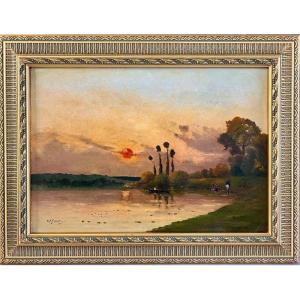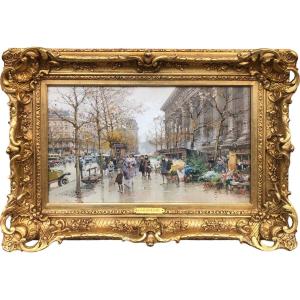Mattheus van Helmont (1623–1679) was a distinguished Flemish Baroque painter celebrated for his vivid depictions of daily life, particularly in domestic interiors, markets, and tavern scenes. Born in Brussels into a family of artists, he was the son of Jan van Helmont, a notable painter, and trained in his father's workshop. Matthieu carried on the family legacy, becoming known for his genre scenes that beautifully capture the rhythms and character of 17th-century Flemish life. Influenced by contemporaries such as David Teniers the Younger and Adriaen Brouwer, van Helmont developed a style that combined the realism of everyday activities with the rich, atmospheric detail typical of the Baroque movement. His works often depict lively village scenes filled with peasants drinking, socializing, and working, with attention to the textures of fabrics, wood, and the flickering light of fires and candles. These scenes exude warmth and a sense of community, capturing the essence of peasant life in Flanders.
Van Helmont's use of color, light, and finely detailed compositions places him among the notable Flemish genre painters of the period. He worked primarily in Brussels and Antwerp, two major artistic centers of the Spanish Netherlands at the time. His paintings, with their focus on the everyday life of common folk, represent a valuable social and cultural record of his era.
Museums housing Matthieu van Helmont’s works:
- **Royal Museums of Fine Arts of Belgium** – Brussels, Belgium
- **Museum of Fine Arts** – Ghent, Belgium
- **Museo del Prado** – Madrid, Spain
- **Musée des Beaux-Arts de Lille** – Lille, France
These institutions reflect van Helmont's continued relevance and the lasting appeal of his genre paintings, which provide an intimate glimpse into the everyday life and social customs of 17th-century Flanders.
Dimensions:
Oil on canvas ca. 44 by 69.5, with frame ca. 64 by 89.5 cms
Provenance:
Sotheby's Amsterdam, November 9th 1999, Lot 60 as Matthieu Van Helmont
Private collection Germany


























 Le Magazine de PROANTIC
Le Magazine de PROANTIC TRÉSORS Magazine
TRÉSORS Magazine Rivista Artiquariato
Rivista Artiquariato
